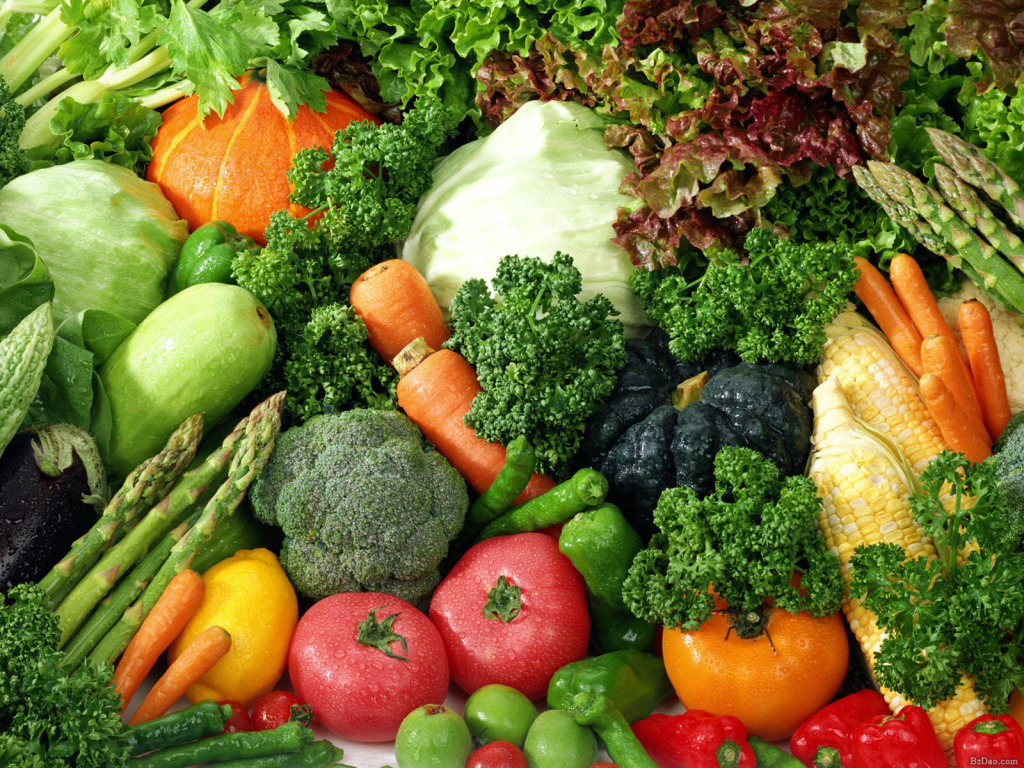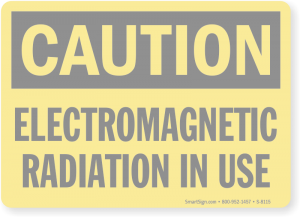
When in one of my previous posts I discussed oxidative effects of electromagnetic field (EMF) exposure and proposed as one of effective remedies vitamin/antioxidant-rich diet, some people argued that it’s not a diet but elimination of EMF exposure from our environment is the most important issue. Just to make it clear, once more. Obviously, if you are suffering from or under the risk of EMF overexposure, the first logical and mandatory step should be to reduce the exposure as much as possible. Simple and reliable steps should be done, for example, for wireless services as the most risky sources of EMF nowadays. The rules of thumb here are: don’t use the wireless unless it is really necessary (in most cases you don’t need WiFi at home or in the office, so use wired internet instead); don’t overuse a smartphone and thus don’t overexpose your brain (see my tips on the issue over there); don’t use a smart meter in your house (it’s a profitable device for your electric company, but a harmful thing for your health) and so on. I know, I know, it’s easier said than done. But nevertheless in many cases you can do it. But (again this stupid but) in most cases you can’t eliminate EMF exposure from your environment totally nowadays, if only you are not a polar bear, or an aborigine of some African tribe, or something like that. That is why you and your loved ones inevitably will have some level of EMF exposure from those ubiquitous wireless services around on the daily base, and that is why we should think over what else should be done to decrease the risks.
And maybe unexpectedly for many, a proper diet can be one of the pillars in our successful fighting against harmful effects of EMF overexposure. For example, survey among electrohypersensitive (EHS) people in Finland revealed that they got the most relief from proper changes in their diet [1]. Up to 70% of them have admitted that proper diet was more effective in their fighting with EHS symptoms than other approaches, including shiatsu, chiropractic, reflexology therapy and physiotherapy (psychotherapy and medical therapy were not effective at all). So, the question is which diet will effectively protect us from the risks of EMF overexposure.
While we exactly know that EMF exposure produces significant oxidative stress in our cells [2], this gives us some important hints. Fighting of oxidative stress in our body is always a topical issue, as it can be produced not only due to EMF exposure, but by the other harmful things like air pollution, smoking and even emotional stress. On the other hand, oxidative stress is closely related with a huge number of disorders and diseases, including aging and cancer [3]. So, a proper control on possible development of oxidative stress in our body is always a good idea.
While I am not an expert in human nutrition, my biological background definitely helps me to analyze a bulk of research and recommendations on the issue. And guess what. I have found not only a proper dietary approach which I would like to recommend you here, but I have even found a simple and reliable formula, which can help you to critically assess any your culinary preference. I have never said it about any person alive, but that guy who elaborated this formula is definitely a genius living among us. I am talking about American medical doctor and expert in human nutrition Joel Fuhrman and his book “Eat to live”. Google it or buy it, but it’s definitely a must-read book for everyone who wants to be educated in healthy nutrition. (This is not a hidden advertising, but absolutely open and clear promotion of this guy work, though I am not personally familiar or in contact with him.)
Dr. Fuhrman’s formula is as simple as that:
H=N/C (Health=Nutrients/Calories)
What are calories? You know, it’s carbs, fats and proteins. What are nutrients? It’s all other useful food stuff which are not calories like vitamins, minerals, antioxidants and so-called phytochemicals (something about ten thousand useful chemicals from fruits and vegetables). Add here fiber, that is also critically important stuff for a healthy diet, and you’ll get the general idea: nutrient-dense, high-fiber, low-calorie diet. And I admire a simple and reliable practical approach of Dr. Fuhrman how to compose and follow the healthy diet. He proposes to get started with a stick on your fridge “Salad is the main dish” and simply follow it. You should stuff yourself with green veggies, protein-containing veggies, non-starchy veggies as much as possible. These ones contain so many nutrients per calorie that more you eat them the healthier (and slimmer) you are. Add fruits, berries, beans/legumes, nuts and seeds, onion, garlic and mushrooms. Keep in mind that fruits and vegetables are rich in both nutrients and fiber. Add some fish, eggs, non-fat dairy and even some chicken breast (if you are not vegetarian and are physically active). But eliminate or significantly restrict a few other stuff from your diet – refined sweets/sugar (including those in soda and cookie), refined oils, fat meat, processed food and salt. It’s all.
Does it work? I am pretty sure, it does. Patients of Dr. Fuhrman not only lose excess weight and get slim, but also they become free for type 2 diabetes, hypertension, cardiovascular disease and even depression. Just a couple citations from “Eat to live”:
- This diet does not require any deprivation. This approach requires no denial or hunger;
- You excess weight will start dropping quickly and dramatically;
- Not only will you lose weight, you will sleep better, feel better physicall, have more energy, and feel better emotionally;
- Not only will your waist be free of fat but your heart will be free of plaque;
And my favorite one:
- It’s almost impossible to eat too much food, only too much of the wrong food.
And I should underline that it’s not kind of propaganda or science fiction, but reliable scientific work where any statement is supported by references of relevant experimental research.
See below the list of nutrient density score for different food stuff based on indentified phytochemicals, antioxidant activity, and total vitamin and minaral content from Dr. Fuhrman [4] (Highest nutrient density = 100 points / Lowest nutrient density = 0):
100 – Raw leafy green vegetables (darker green has more nutrients), romaine lettuce, leaf lettuces, kale, collards, spinach, Swiss chard, parsley, daikon;
97 – Solid green vegetables (raw, steamed, or frozen), artichokes, asparagus, bok choy, broccoli, Brussels sprouts, cabbage, celery, cucumber, kohlrabi, okra, peas, peppers, snow peas, string beans, zucchini;
50 – Non-green, non-starchy vegetables. beets, eggplant, mushrooms, onions, tomatoes, yellow and red peppers, bamboo shoots, water chestnuts, cauliflower;
48 – Beans/legumes (cooked, canned, or sprouted), red kidney beans, chickpeas, pinto beans, cowpeas, navy beans, cannellini beans, soybeans, lentils, white beans, lima beans, pigeon peas, black-eyed peas, black beans;
45 – Fresh fruits, apples, apricots, bananas, blackberries, blueberries, cantaloupes, grapefruits, grapes, kiwis, mangoes, nectarines, all melons, oranges, peaches, pears, persimmons, pineapples, plums, raspberries, strawberries, tangerines, watermelons;
35 – Starchy vegetables, white potatoes, sweet potatoes, butternut squash, acorn, squash, winter squash, parsnips, pumpkins, turnips, corn, carrots, chestnuts;
22 – Whole grains, barley, buckwheat, millet, oats, brown rice, wild rice, quinoa;
20 – Raw nuts and seeds, almonds, cashews, filberts, macadamias, pecans, pine nuts, pistachios, pumpkin seeds, sunflower seeds;
15 – Fish;
13 – Fat-free dairy;
11 – Wild meats and fowl, eggs;
8 – Red meat;
4 – Full-fat dairy;
3 – Cheese;
2 – Refined grains (white flour);
1 – Refined oils;
0 – Refined sweets.

You’ll find a lot of other important details and (unexpected) scientific data in this book like those that demonstrate that processed juice is not a healthy stuff at all because contains too much refined sugar and too little nutrients, or that broccoli, spinach and peas contain higher percent of protein per calorie than cheeseburger and meatloaf, or that nutrient-dense diet makes you full and content without eating junk food. But frankly speaking, you will not find any remarks there that this diet is effective against EMF overexposure, including the case of electrohypersensitivity. But I could not figure out a single reason why this approach will not work in case of oxidative stress due to EMF exposure. Moreover, I see that it will definitely work. And, in my opinion, applying this dietary approach can be especially important for overweight people, who are suffering from EMF exposure. I’ve never seen any analysis on percent of overweight people among electrohypersensitive persons, but I convinced that excess weight significantly weakens human body and its ability to protect itself from any environmental challenges, including EMF exposure.
So, I definitely advocate for such nutrition for all who are determined to be healthy and protected from any harmful impacts including ubiquitous wireless radiation. And my last point in this post to be clear again. A healthy nutrient-dense, fiber-rich, low-calorie diet is a critically important thing for our health, but it’s not all. Except of healthy diet and except of strong restriction of excess EMF exposure, a lot of other important things could/should be done for fighting EMF challenge nowadays like proper physical activity, proper outside activity, proper antistress relaxation and so on. But it’s the issues for the next posts.
Be informed and healthy,
Dr. Igor Yakymenko
References:
- Hagström M., Auranen J., Ekman R. Electromagnetic hypersensitive Finns: symptoms, perceived sources and treatments, a questionnaire study. Pathophysiology, 2013. 20(2): 117-122.
- Yakymenko I., Tsybulin O., Sidorik E., et al. Oxidative mechanisms of biological activity of low-intensity radiofrequency radiation. Electromagn Biol Med, 2016. 35(2): 186-202.
- Valko M., Leibfritz D., Moncol J., et al. Free radicals and antioxidants in normal physiological functions and human disease. Int J Biochem Cell Biol, 2007. 39(1): 44-84.
- Fuhrman, J. Eat to live. The revolutionary formula for fast and sustained weight loss. 2003.



